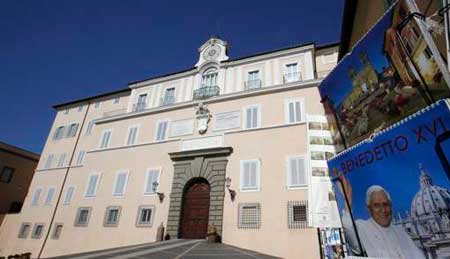The pontificate of Pope Benedict XVI. has come to an end. The period of the Sede Vacante (“empty chair”) has officially begun on Thursday 8:00 p.m., and ends with the election of a new Pope.
At exactly 8:00 pm, the door of the Papal summer residence in Castel Gandolfo, 30 kilometres south of Rome, whereto Benedict had retired on Friday, was closed. Benedict XVI. is now an Emeritus Pope. The Swiss Guard withdrew from Castel Gandolfo. Their mission is to protect the reigning Pope.
At the same time the Cardinal Chamberlain (Camerlengo) of the Roman Church, Cardinal Secretary of State Tarcisio Bertone (78), sealed Benedict XVI’s apartment, on the third floor of the Apostolic Palace in the Vatican, and the elevator that leads there. It is the same ceremony as after the death of a Pope. The rooms remain closed until the election of a successor. Also Benedict’s fisherman’s ring has no function anymore.
“I am only a pilgrim”
Benedict is the first Pope of modern times who resigned from his post.It has yet not been determined When his successor will be chosen. In many countries, there where held commemoration services, for the farewell of the Pope.
As the last public act of his pontificate, Benedict appeared at 5:38 pm on the Loggia of the Palace in Castel Gandolfo outside Rome and greeted the faithful gathered there. He spread the arms and was celebrated with loud cheers, “Benedetto” calls and colorful banners. “I am no Pope any longer, I am simply a pilgrim”, he said, blessing the faithful. And then: “Good night.”
At 8:00 pm, the portal of the residence was closed as a symbolic sign of the end of the pontificate. Once again there were “Viva il Papa” calls and all bells were rung in Castel Gandolfo.

